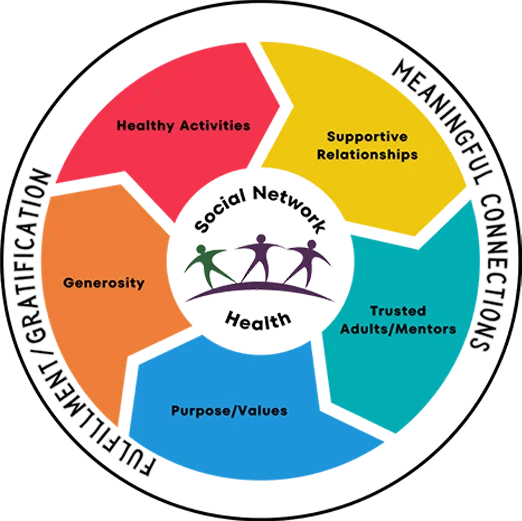

The Social Network Health approach uses a structured and layered system to deliver key protective factors. When delivered this way, these protective factors work together to enhance relationship networks, group cohesion, adaptive coping mechanisms, and group norms within schools and communities. This is achieved by maximizing protective bonds across student populations and ensuring that clearly identified trained adults are connected to multiple students.
Dr. Peter Wyman’s (Professor of Psychiatry and Academic Chief of Child and Adolescent Psychiatry, University of Rochester School of Medicine and Dentistry) research indicates that successful programs depend on several critical factors: having multiple opportunities to learn together, discovering and experiencing content collectively, and understanding each other’s skills individually and as a group. This grassroots programming ensures ecological validity.
Social Network Health Approach is a developmental approach that implements a sequenced and scheduled on-site support system to develop the skill set of the staff and advisors.
This scaffolded method guides the advisors through the nuances of implementing the Social Network Health approach. The ‘touchpoints’ by the Networks of Support team have proven critical to the school’s and communities’ implementation and sustainability of their programs.
Networks of Support does not endorse one-time workshops or limited support for schools/communities. Consistent support over multiple years provides the accountability and foundation to sustain strong programs.


















